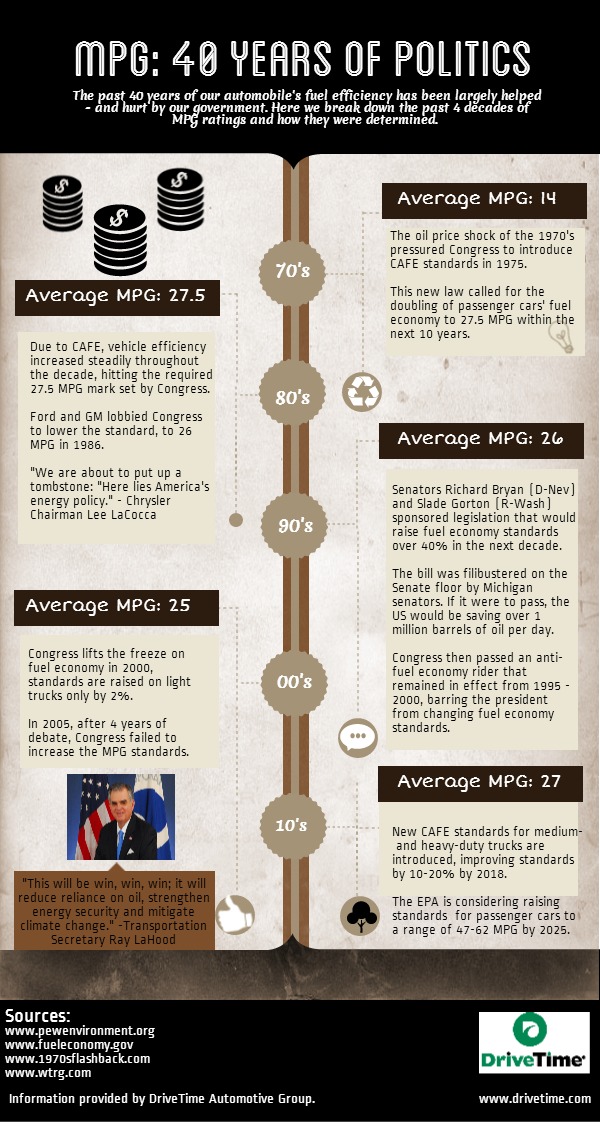
from http://blog.drivetime.com/
Transcription:
MPG: 40 Years of PoliticsÂ
The past 40 years of our automobile’s fuel efficiency has been largely helped – and hurt by our government. Here we break down the past 4 decades of MPG ratings and how they were determined.
1970′s – Average MPG: 14
- The oil price shock of the 1970′s pressured Congress to introduce CAFE standards in 1975.
- This new law called for the doubling of passenger cars’ fuel economy to 27.5 MPG within the next 10 years.
1980′s – Average MPG: 27.5
- Due to CAFE, vehicle efficiency increased steadily throughout the decade, hitting the required 27.5 MPG mark set by Congress.
- Ford and GM lobbied Congress to lower the standard, to 26 MPG in 1986.
- “We are about to put up a tombstone: “Here lies America’s energy policy.†– Chrysler Chairman Lee LaCocca
1990′s – Average MPG: 26
- Senators Richard Bryan (D-Nev) and Slade Gorton (R-Wash) sponsored legislation that would raise fuel economy standards over 40% in the next decade.
- The bill was filibustered on the Senate floor by Michigan senators. If it were to pass, the US would be saving over 1 million barrels of oil per day.
- Congress then passed an anti-fuel economy rider that remained in effect from 1995 – 2000, barring the president from changing fuel economy standards.
2000′s – Average MPG: 25
- Congress lifts the freeze on fuel economy in 2000, standards are raised on light trucks only by 2%.
- In 2005, after 4 years of debate, Congress failed to increase the MPG standards.
2010′s – Average MPG: 27
- New CAFE standards for medium- and heavy-duty trucks are introduced, improving standards by 10-20% by 2018.
- The EPA has raised standards for passenger cars to 54.5 MPG by 2025.
“This will be win, win, win; it will reduce reliance on oil, strengthen energy security and mitigate climate change.†-Transportation Secretary Ray LaHood
Sources:
www.pewenvironment.org
www.fueleconomy.gov
www.1970sflashback.com
www.wtrg.com
By Chris Piper

Thanks for sharing, Michael!